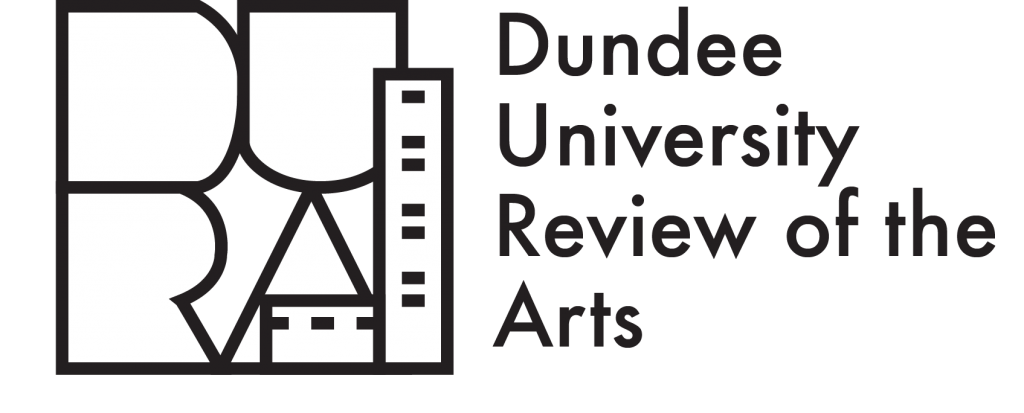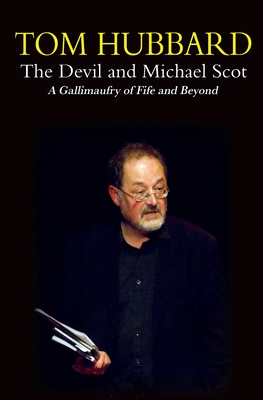The Devil and Michael Scott: A Gallimaufry of Fife and Beyond
Tom Hubbard
(Grace Note Publications, 2020); pbk: £7.99
The Devil and Michael Scott: A Gallimaufry of Fife and Beyond (2020) is the latest insightful offering from Tom Hubbard. In this intriguing collection of poems, essays and a stage play, Hubbard offers us a wonderful jumble of Fife, its history and its people. The famous polymath and rumoured wizard Michael Scott is the most prominently featured Fifer. Joining him are a few unexpected faces, including Russian poets and American novelists. Over the course of the collection, Hubbard draws these unlikely figures together, as he takes us on a literary pilgrimage charting not only the coast of Fife, but the spread of its influence across oceans and time.
Much of the collection is taken up by a series of poems, collectively called A Testament of Fife. Divided into eight parts, these poems take us on a historical and literary walking tour. Rich imagery brings the landscape to life, for example, painting Craigtoun Country Park in an eerie, melancholy beauty:
Where , in the moonlight, sculpted stones
Leamed like stacks of brittle bones
With gaping gods in their alcoves;
Nettles entwined in forgotten groves,
Terraces and balustrades collapsing into heaps [.]
The above passage demonstrates Hubbard’s use of rhyme, often wielded for comedic effect:
The mediocre of privileged birth
Insist on dominion over this earth:
At the top of the table they smirk as they sup,
Intent on buggering everything up
For all their playful assonance, these lines allude to Hubbard’s political frustrations with the exploitation of Fife’s natural resources and its people. These frustrations are expressed more fully in the play, ‘The Devil and Michael Scot’.
Perhaps most impressive in Hubbard poetry is his use of intertextuality to draw inspired connections between Fife and the rest of the world. For example, Hubbard quotes Mikhaïl Lermontov, highlighting the poet’s Scottish lineage and his longing to see his ancestral homeland. Not only this, but Hubbard strengthens the connection and demonstrates his own poetic talents by translating Lermontov into Scots:
I gang my lane, ootby towart the gate,
The flinty wey fair glisters through the haar;
The muirland harks ti God. The nicht is quate.
Nou is the time when star collogues wi star.
Such connections likewise appear in Hubbard’s essays. He writes how Fife inspired the Edinburgh-born Robert Louis Stevenson, but also Herman Melville, who boasted Scottish ancestry and ‘mentions the Kingdom a number of times in Moby Dick’.
The play, ‘The Devil and MichaelScott’,has in its dialogue the same playful yet rich language as the poems. Political jabs are likewise present: following Sir Walter Scott and various Scottish legends, Hubbard attributes the breaking of Eildon Hill into three parts to Michael. In a twist however, this is declared an act of goodness on Michael’s part, for demolishing a quarry which was destroying the land and its workers.
Even on the page, the characters are lively. The plot of the play more or less follows that of Faust, and The Devil particularly stands out. According to the stage directions, he: ‘speaks affectedly, now and then with a hint of self-conscious vulgarity, as if this arch-aristocrat felt a need to parody the common touch’. Again themes of elitism are raised, but in a manner open to the actor’s interpretation, creating space for a performance equal parts humorous and disdainful, as he and Scott argue like petulant children. A sinister undercurrent throughout the play also provides tension, from Scott’s increasingly ‘weirder’ or manic laughs, to the final appearance of the Devil at Scott’s window as he dies. Proposed elements of simple stagecraft in the play , such as a flickering candle representing Michael’s waning life, ensure this would be a visually engaging play.
It is difficult to surmise all the elements of this collection, or pay them equal attention. It is indeed a ‘gallimaufry’, its parts as tangled and varying as Fife itself. Each part, however, is as well-written as it is researched, offering new insights into the cultural and historical importance of the region.
Kai Durkin


I look forward to reading this very much.
Sounds wonderful. Is it possible to obtain a signed copy?
think you might write to Tom Hubbard at tfhubbard@yahoo.co.uk.